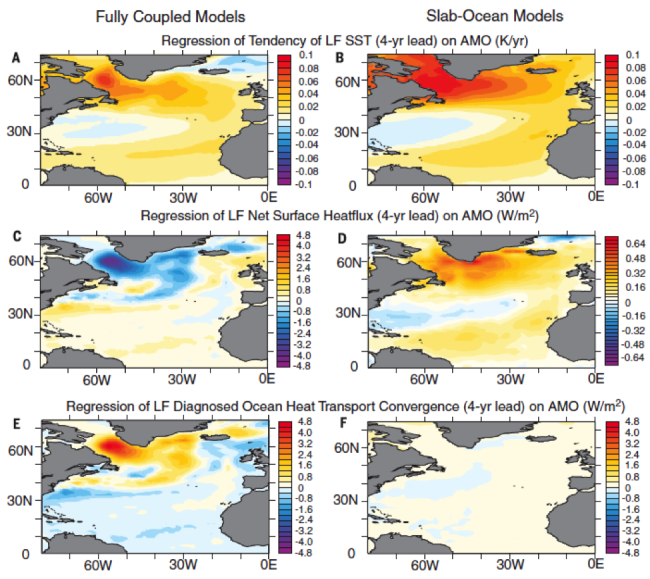The central role of ocean dynamics in the Atlantic Multidecadal Oscillation
The Atlantic Multidecadal Oscillation (AMO) has significant regional and hemispheric climate impacts, such as modulating multidecadal variations in summer climate over North America and Europe, Atlantic hurricane activity, India/Sahel summer rainfall, northern hemispheric mean surface temperature, and Arctic sea ice. Understanding the mechanism causing the AMO is crucial for predicting these regional climate impacts in the future.

In a recent technical comment on "The Atlantic Multidecadal Oscillation without a role for ocean circulation" published in Science, Zhang et al. show that ocean dynamics play a central role in the AMO, and the previous claims that “the AMO is a thermodynamic response of the ocean mixed layer to stochastic atmospheric forcing, and ocean circulation changes have no role in causing the AMO” are not justified. The mechanism causing the AMO in fully coupled general circulation models is very different from that in slab-ocean models. In coupled models, time-varying ocean heat transport convergence in the subpolar region is the leading cause of the AMO, whereas the varying surface heat fluxes are a passive response to, not a cause of, the AMO. The results are consistent with a wealth of evidence that the AMO is associated with coherent multidecadal variability in many variables (ocean heat/salt content, overturning circulation and heat transport, and ocean-driven surface turbulent heat fluxes). The mechanisms of the AMO are clearly distinguishable between coupled models and slab-ocean models, even with similar sea surface temperature (SST) patterns and power spectra.
The largest low-frequency SST anomalies in the observed AMO pattern are in the subpolar region. The weaker low-latitude AMO signal responds to the stronger subpolar AMO signal through combined oceanic and atmospheric teleconnections (including changes in the Hadley circulation, wind-evaporation-SST feedback, and cloud feedback). The results illustrate that the subpolar gyre is the key region for generating the AMO, and that the most realistic models indicate that ocean circulation indeed plays a leading role in this variability.
1NOAA Geophysical Fluid Dynamics Laboratory
2National Centre for Atmospheric Science, University of Reading, UK
3Climate and Global Dynamics Laboratory, National Center for Atmospheric Research
Topics
- Modeling
- Atlantic Ocean
- AMOC
